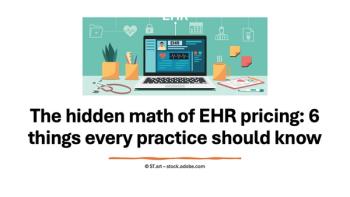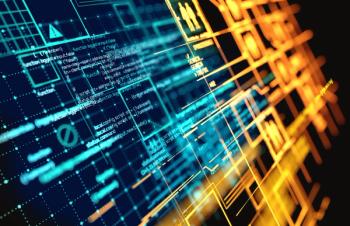
'How My EHR and I Learned to Get Along'
Surgeon Harry Wilkins on his sometimes-rocky EHR "marriage."
Divorce! As I sat in the PACU late on a Sunday last winter, tears beginning to well in my eyes, I seriously contemplated a messy, expensive separation from the practice I had joined only a year earlier. With my head in my hands, trying to gather my thoughts, I reminisced over how I had come to such a point.
During five years at my previous practice as a trauma surgeon and medical director at a busy, urban Level I trauma center, I had served on an EHR planning committee, attended EHR road shows, and beta tested numerous platforms. Dreams of meaningful use incentive payments vanished as numerous meetings with my previous colleagues failed to produce a viable EHR implementation strategy. This failure was not the only reason I sought alternative employment, but it was certainly supporting evidence of my need for a major change. Likewise, the presence of an EHR system at my new home was an important if not the deciding factor in my selection of an employer.
The practice I chose is a well-established 90-physician group in a town of 50,000 people with a single, 300-bed community hospital. Both my new practice and the hospital had EHR systems already in place well before my arrival in late 2010.
What a wonderful honeymoon! As I got acquainted with my new surroundings, I enjoyed hand-holding the entire way. If I had questions, there were always friendly staff members, case managers, nurses, and ward clerks to walk me through my challenges and resolve my issues. Like most newlyweds, I was blind to what at first seemed like minor irritations. Because I was not initially very busy, it was easy to ignore the fact that it was taking me nearly all morning to see just a few patients. How taken I was with the mouse clicks that took me through a menu of choices for orders. My discharges took longer than what I was accustomed to, although I had only to click through several drop-down menus to write prescriptions, print off discharge instruction templates, and complete my dictations. I easily clicked through pages of legible reports from my consultants, ER physicians, and case managers.
In my clinic, as I saw patients, I was thrilled as I fired up my laptop and saw my vital signs, chief complaint, and medications all pre-filled on my clinic templates. My pre-op orders, labs, and prescriptions were all clearly filled with the click of a mouse. I was happy that I had not become jaded and decided to take the EHR leap. The festive Thanksgiving, Christmas, and New Year's holidays were in full swing and life was good.
Spring brought with it the initial signs of marital discord. The hospital was gearing up for an EHR upgrade; meanwhile, my group upgraded its EHR, even as my patient volume was increasing.
I now began noticing how the extra mouse clicks insidiously added time to my daily rounds. On a couple of occasions I found myself contemplating pushing back my clinic hours and my OR start time in order to allow more time for rounding. I was beginning to resent the effect my EHR was having on my lifestyle and I found myself yearning for the relatively carefree pen and paper lifestyle. I reminded myself of the "wedding vows" I had taken when I joined this new practice just six months earlier, and told myself this was just the honeymoon glow wearing off.
I pledged to apply myself and embrace the changes inherent to what I referred to as EHR 2.0, which would introduce a new medication reconciliation process at the hospital. This latest iteration called for each medication to be checked individually on every patient that went to the operating room. No longer would an order to "resume all preoperative medications" suffice. Now, a 10-minute temporal artery biopsy called for a lengthy review of each preoperative medication before the "hard stop" alerts could be overcome and the post-operative orders could be completed. This change often added hours to my regular schedule, and it was near the end of just such a marathon work day that I found myself contemplating another practice switch late that winter night.
I decided to sleep on it, and the next day I met with the IT team and the hospital chief information officer. As it turned out, so many of my colleagues had complained about the negative impact of EHR 2.0 that she rolled back the implementation. The medical staff and I felt a great deal of relief. It was as if we were finally on the receiving end of a compromise!
Eighteen months into my new "marriage," I have days that are great and some that are not. Glitches arise within the EHR from time to time, but I realize that my paper and pen days really only seem so rosy in retrospect. I have developed a great relationship with the IT help desk - my "marriage counselor" - and understand that as with all good relationships, this takes work by both parties to get the most from the union.
Realizing that change is the only constant in life, I have accepted that EHR and I are joined "until death do us part," and have learned to let my needs be known and live with the compromises necessary to get the most out of the relationship.
Harry E. Wilkins, III, MD, MHCM, FACS, is an acute-care surgeon in Quincy, Ill. He received his MD from Northwestern University and a master of science in healthcare management from Harvard School of Public Health. He can be reached at
This article originally appeared in the July/August 2012 issue of Physicians Practice.
Newsletter
Optimize your practice with the Physicians Practice newsletter, offering management pearls, leadership tips, and business strategies tailored for practice administrators and physicians of any specialty.














